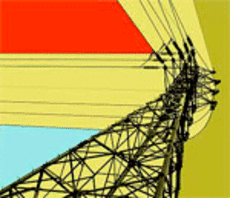Considering its import, the Federal Energy Regulatory Commission’s Order 1000, issued on July 21, has attracted remarkably little notice. Together with its precursor, Order 890, promulgated in 2007, it represents the most important U.S. power grid reform since the system was opened to wholesale competition with Order 888 in 1996.
FERC’s objective with Order 1000 is to remove bottlenecks that have impeded expansion of the grid, expedite long-term planning, and make the power system more friendly to intermittent renewable sources of energy. The order mandates development of regional transmission plans and introduces the principle that such plans should take consideration of public policy requirements (such as state renewables portfolio standards).
It also sets out principles for allocation of transmission investment costs. As spelled out in the statement by FERC Chairman Jon Wellinghoff, those include: that costs should be commensurate with benefits; that no costs should accrue to those receiving no benefits; and that no costs may be imposed on an adjacent region without that region's consent.
Expanding on the need for the order and the rationale for the new rules, Wellinghoff cited NERC's 2010 Long-Term Reliability Assessment, saying that 60 percent of additions to the power grid to 2019 will be made to accommodate wind and solar generation. "Strengthening and expanding the system for the reliable integration of these resources will require significant investment in transmission," said Wellinghoff, with some understatement.
The type of project that could get a boost from FERC 1000 is the Atlantic Wind Connection, the plan for an sub-sea transmission cable to link up offshore wind turbines with onshore grids in Virginia, Delaware, and New Jersey. As an analysis by the liberal think-tank Center for American Progress notes, "The AWC will be expensive with a cost of more than $5 billion, which is not surprising for a project this ambitious. This project may not make sense if only the traditional economic and reliability benefits are considered because the sum of those benefits may not outweigh the costs."
Though FERC squares nicely with the Obama Administration's emphasis on green energy, in terms of its inspiration and history, it can safely be characterized as nonpartisan. The work that led to it straddled the Clinton and George W. Bush administrations, and members of the current board, including the current chairman, took office under Bush.



